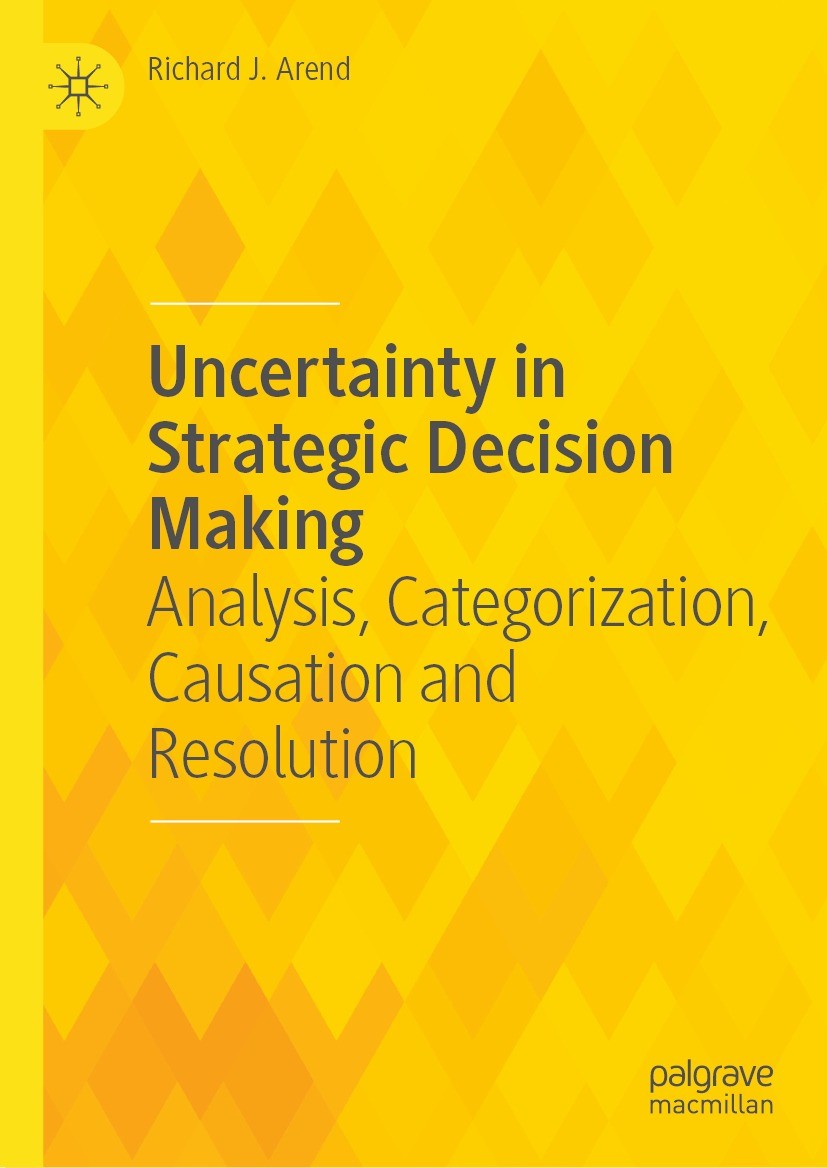| 书目名称 | Uncertainty in Strategic Decision Making | | 副标题 | Analysis, Categoriza | | 编辑 | Richard J. Arend | | 视频video | http://file.papertrans.cn/942/941151/941151.mp4 | | 概述 | Offers a critical assessment of the current literature, pointing out mistakes in measures and prescriptions.Offers a new, up-to-date comprehensive and appropriately-structured typology of uncertaintie | | 图书封面 |  | | 描述 | .Knight (1921) defines uncertainty as an informational market failure that, while being detrimental to most existing businesses, presents possible profitable opportunities for others. This book builds upon that classic work by providing an analysis of the alternative approaches to strategic decision-making under such uncertainty. It covers what uncertainty is, why it is important, and what connections it has to business and related fields, culminating in a new and comprehensive typology and a valuable guide for how to appropriately address various types of uncertainties, even under AI..It clarifies the current terminological and categorical confusion about ‘unknowns’ while complementing the mathematical, probability-based approaches that treat uncertainty as ‘knowable’ (i.e., as risk). It corrects the mistaken approaches that treat ‘unknowables’ as ‘shapeable’ or ‘discoverable’. This book widens the perspective for viewing uncertainty, in terms of its impacts across humanity, byoffering a shrewder understanding of what roles uncertainties play in human activity. It will appeal to academics across business, economics, philosophy, and other disciplines looking for approaches to apply | | 出版日期 | Book 2024 | | 关键词 | ambiguity; risk; probability; strategy; optimization; typology; philosophy of science; ontology; truth; shock | | 版次 | 1 | | doi | https://doi.org/10.1007/978-3-031-48553-4 | | isbn_softcover | 978-3-031-48555-8 | | isbn_ebook | 978-3-031-48553-4 | | copyright | The Editor(s) (if applicable) and The Author(s), under exclusive license to Springer Nature Switzerl |
The information of publication is updating

|
|
 |Archiver|手机版|小黑屋|
派博传思国际
( 京公网安备110108008328)
GMT+8, 2025-11-5 22:49
|Archiver|手机版|小黑屋|
派博传思国际
( 京公网安备110108008328)
GMT+8, 2025-11-5 22:49


